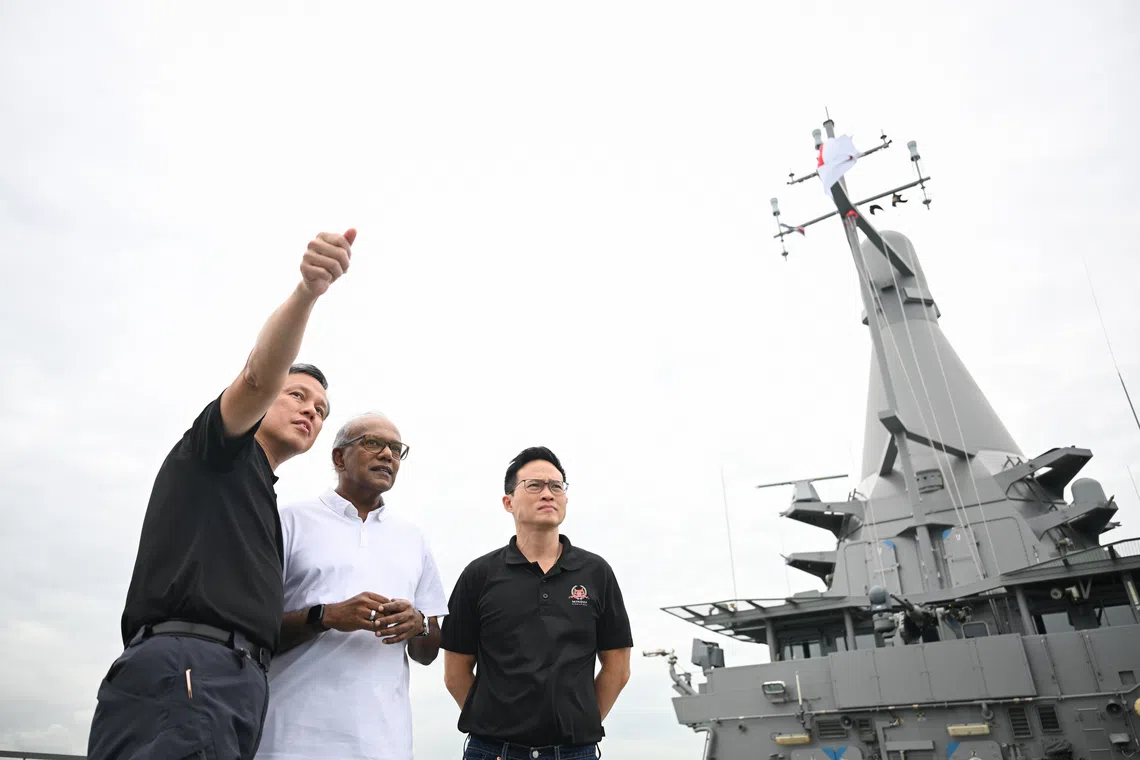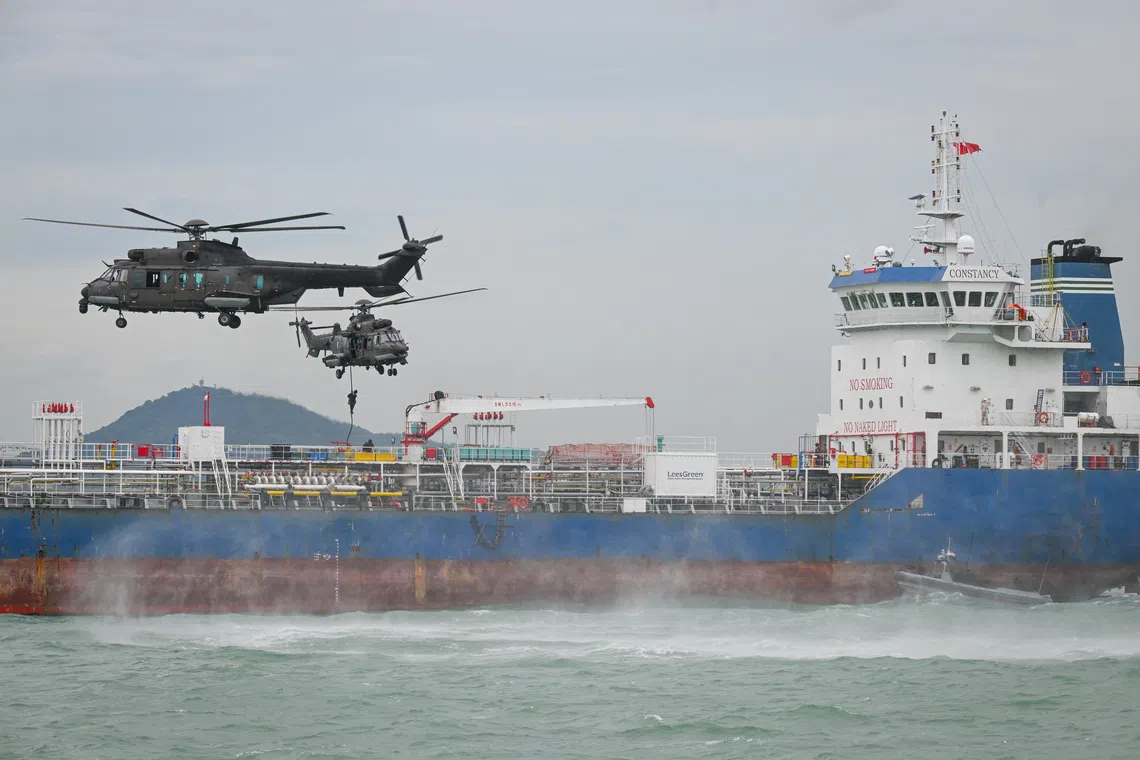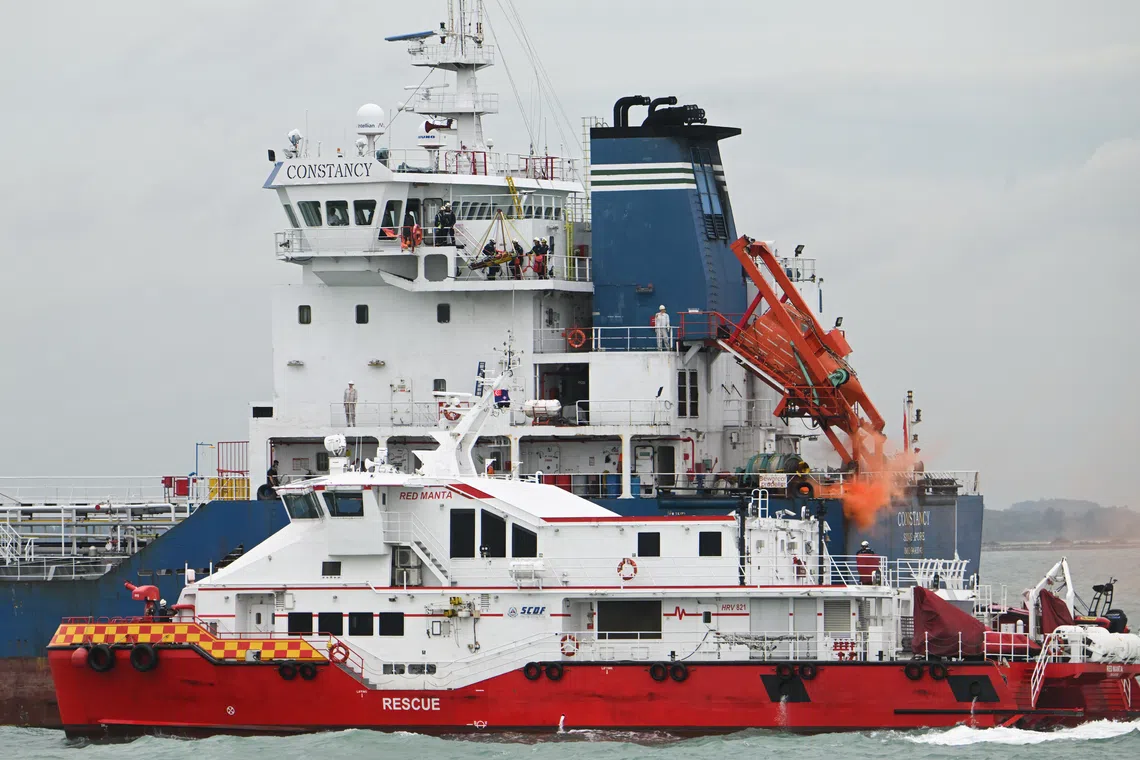Critical for S’pore to identify maritime threats, as terrorist attacks can come from sea: Shanmugam
Sign up now: Get ST's newsletters delivered to your inbox

Coordinating Minister for National Security and Minister for Home Affairs K. Shanmugam with Defence Minister Chan Chun Sing and Minister of State for Defence Desmond Choo at Exercise Highcrest on Nov 28.
ST PHOTO: SHINTARO TAY
Follow topic:
- Singapore faces maritime threats that could severely impact its economy, with maritime trade accounting for about seven per cent of its GDP.
- Exercise Highcrest, involving multiple agencies, demonstrated Singapore's readiness to counter maritime terrorism, simulating a hijacked vessel scenario.
- The Singapore Maritime Crisis Centre, formed after the 2008 Mumbai attacks, ensures intelligence sharing and coordinated responses to potential sea threats.
AI generated
SINGAPORE – A potential attack from the sea could result in a crisis, affecting maritime trade, which accounts for about 7 per cent of Singapore’s gross domestic product.
So, it is critical for Singapore to swiftly identify and deal with any such threat, said Coordinating Minister for National Security and Minister for Home Affairs K. Shanmugam.
He was speaking to the media on the Republic of Singapore Navy’s (RSN) Independence-class Littoral Mission Vessel RSS Justice on the fourth and final day of Exercise Highcrest, an annual counter-terrorism exercise.
It was held from Nov 24 to 28, and involved more than 240 personnel from the RSN, Police Coast Guard, Maritime and Port Authority of Singapore, Immigration and Checkpoints Authority, Singapore Customs, Singapore Civil Defence Force (SCDF), Republic of Singapore Air Force and Special Operations Task Force.
Mr Shanmugam, who was accompanied by Defence Minister Chan Chun Sing and Minister of State for Defence Desmond Choo, said the maritime security environment is challenging.
He said: “When you come out into the waters, you see thousands of ships. Our waterways, sealines, are critical to our prosperity.
“One of the ways in which we can be attacked is through attack on ships and our waterways, or an attack from the sea onto Singapore itself.”
In the first half of 2025, there was a spike in piracy and armed robbery in the straits of Malacca and Singapore, two of the busiest straits in the world
In the 2008 Mumbai attacks

Special Operations Task Force personnel during Exercise Highcrest, an annual counter-terrorism exercise, on Nov 28.
ST PHOTO: SHINTARO TAY
A total of 175 people died and more than 300 were injured. Among them was a Singaporean lawyer who was killed after being held hostage.
In August 2016, the Indonesian authorities foiled a plot by Batam-based terrorists
The group, called Katibah Gonggong Rebus, had considered using a hill or an outer island of Batam as a launch point, but were arrested by the Indonesian authorities before they could do so.
Exercise Highcrest was organised by the Singapore Maritime Crisis Centre (SMCC), which acts as a centralised organisation to ensure intelligence data is shared and responses are coordinated across agencies.
It was formed in 2008 after the Mumbai attacks, when key gaps in India’s response were identified.

The Singapore Civil Defence Force evacuating casualties during Exercise Highcrest, an annual counter-terrorism exercise, on Nov 28.
ST PHOTO: SHINTARO TAY
During the exercise, Mr Shanmugam observed from Changi Naval Base how personnel from the different agencies worked together to neutralise threats in a simulation of a hijacked vessel off the coast of Singapore with plans to conduct terrorist attacks on key coastal installations.
Mr Shanmugam then sailed on the RSS Justice, to observe the Special Operations Task Force storming the vessel and the SCDF extinguishing a simulated fire and evacuating casualties.
Mr Shanmugam commended the SMCC for playing a pivotal role in driving and overseeing national maritime security operations, and providing early warning against potential maritime terrorist attacks.
He said: “How did we identify, how did we provide early warning, how did we take it out – it is critical for us, and the exercise was well conducted.”


